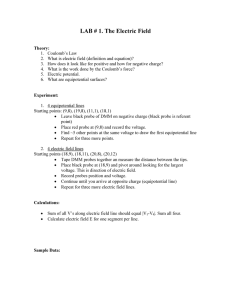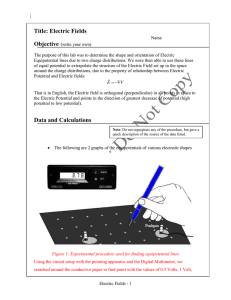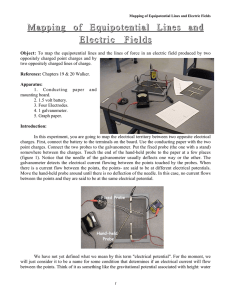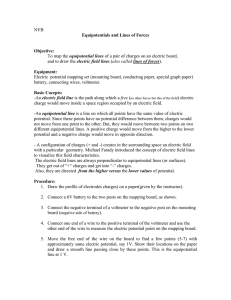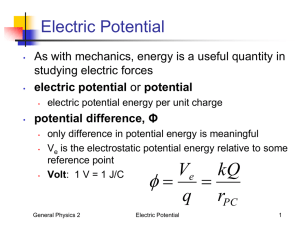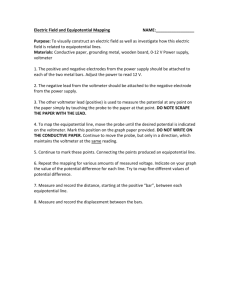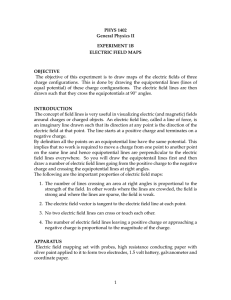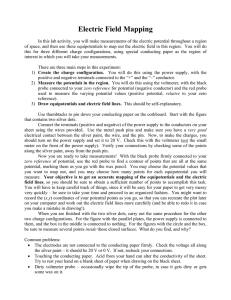Equipotential Surfaces Introduction
advertisement
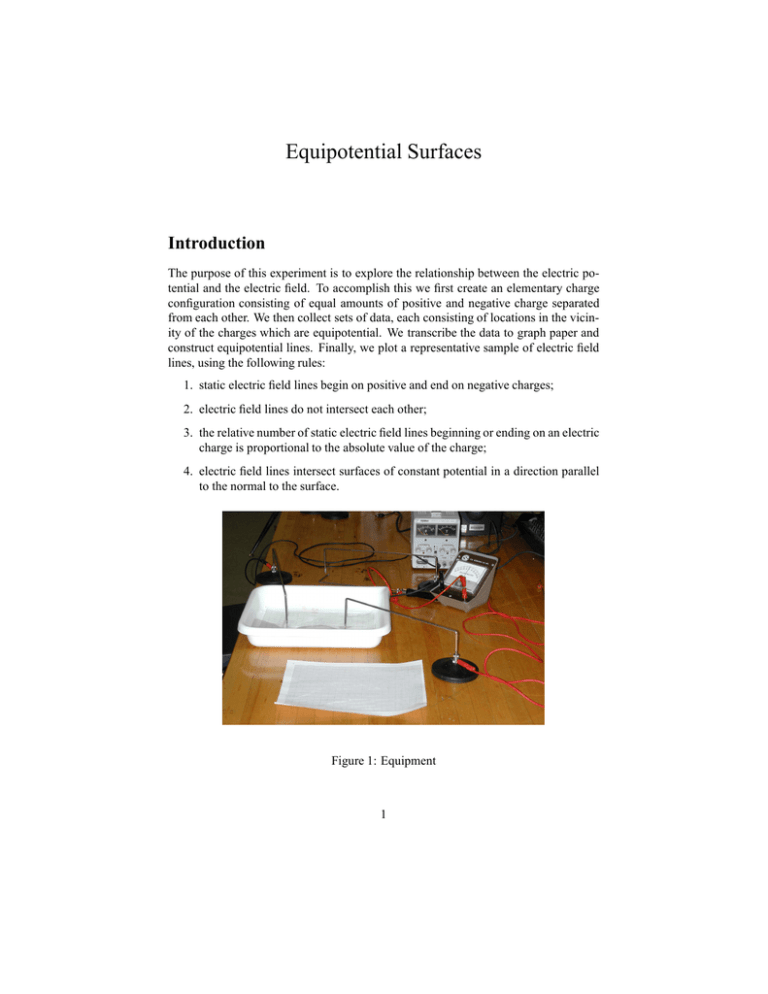
Equipotential Surfaces Introduction The purpose of this experiment is to explore the relationship between the electric potential and the electric field. To accomplish this we first create an elementary charge configuration consisting of equal amounts of positive and negative charge separated from each other. We then collect sets of data, each consisting of locations in the vicinity of the charges which are equipotential. We transcribe the data to graph paper and construct equipotential lines. Finally, we plot a representative sample of electric field lines, using the following rules: 1. static electric field lines begin on positive and end on negative charges; 2. electric field lines do not intersect each other; 3. the relative number of static electric field lines beginning or ending on an electric charge is proportional to the absolute value of the charge; 4. electric field lines intersect surfaces of constant potential in a direction parallel to the normal to the surface. Figure 1: Equipment 1 Procedure Position the probes in the pan of water, as shown in Figure 1. Connect the positive terminal of the power supply to one probe, and the negative terminal of the power supply to the other probe. Determine the location of seven, approximately equally spaced, equipotential lines as follows. Hold one probe of the galvanometer at a fixed location. Using the other probe attached to the gavanometer find the location of at least six other points which are at the same potential. As you proceed transcribe the locations of the probe to the corresponding locations on the graph paper. Determine the locations of six additional equipotential lines, proceeding in the same manner. On the graph paper mark the locations of the positive and negative charges. For each set of points at the same potential construct an equipotential line by drawing a smooth curve which passes in close proximity to the points. Note: it is not necessary that the curve actually pass through the points, but the curve should be smooth. Finally, construct five, approximately evenly spaced, electric field lines using the rules given previously. 2

